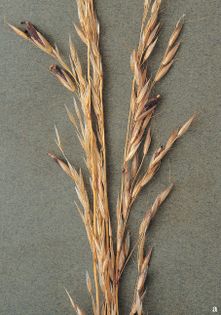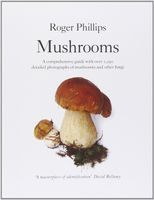Ergot Claviceps purpurea (Fr.) Tul. (illustrated 90% life size) Sclerotium formed in the inflorescences of grasses, this is the most easily recognized stage, up to 1cm long, fusiform, longitudinally furrowed; violet-black. Mature sclerotium falls to the ground in autumn, over-wintering in this state; in late spring, after chilling, fruit bodies develop from it. Fruit bodies tiny, drumstick-shaped; pale pinkish or purplish. Spores 100×1¼, thread-like. Habitat grasses of several genera including some of our most important crops, barley, oats, rye, and wheat (shown here on the oat grass Arrhenatherum elatius); sclerotia summer to early autumn, fruit bodies spring. Frequent. Deadly poisonous. Note poisoning by C. purpurea (ergotism) has been recorded since the Middle Ages. Outbreaks were sudden and inexplicable, and many superstitions and myths grew up around the affliction. It was widely believed to be divine punishment on sinners, and for centuries was known as Holy Fire. Poisoning constricts blood vessels and can take two forms: a burning sensation in the limbs, followed by gangrene, or effects on the brain, causing convulsions, hallucinations, and psychotic behaviour. The link between ergotism and infected grain was only fully established in the 20th century. Pharmacological analysis of the sclerotia revealed a mixture of powerful chemicals, among them compounds related to LSD. Even before ergot’s chemistry was understood, it was widely used for centuries by midwives to stimulate contractions and so aid childbirth. The crude drug is dangerous and unpredictable, due to its extremely low safe dose and its side effects; however, the purified derivatives are now used in medicine in the treatment of migraine and other disorders as well as in obstetrics.




